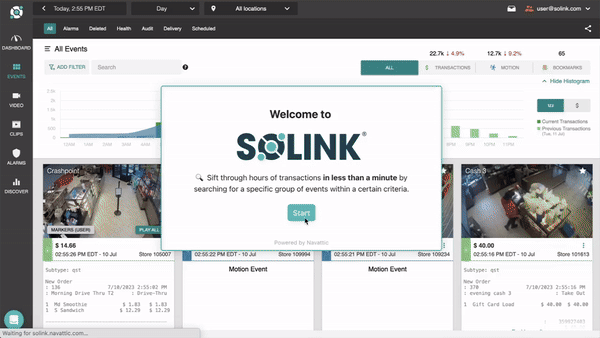Verified alarms
A verified alarm is defined as when a security operator or the owner of a security system can visually see that an event is unfolding and therefore emergency dispatchers should be notified.
What is verified alarms?
Traditional alarm systems, once alarmed, notify emergency services whenever an intruder is detected. These systems lead to many false alarms, which often come with hefty nuisance alarm fines. Modern alarm systems, including Solink’s Video Alarms Monitoring Service, come with alarm verification capabilities. Instead of sending every alarm to emergency services, a person reviews video of the event to confirm whether there is a true event. Only confirmed events, or verified alarms, are sent to emergency services.
Find suspicious cash handling within your business
Learn how easy it is to uncover suspicious cash handling in our self-guided tour.

Why are verified alarms important?
The first benefit of alarm verification is that companies face fewer false alarm fines. Emergency responders are busy, and these services can cost local governments a lot of money. To recoup these costs and limit the time wasted on false alarms, many cities charge businesses for dispatching services due to a false alarm.
The result is that verified alarms save you money.
In addition, busy emergency services need to prioritize calls based on the likelihood of being a true emergency. If a company gains a reputation for a lot of false alarms, then future alarms from the same location might be deprioritized under the assumption that it is another false alarm. In fact, some police departments have stopped responding to some non-verified alarms.
Alarm verification also comes with the ability to share real-time video of an incident as it is unfolding. By giving the emergency dispatchers a view of the event, they are able to respond appropriately.